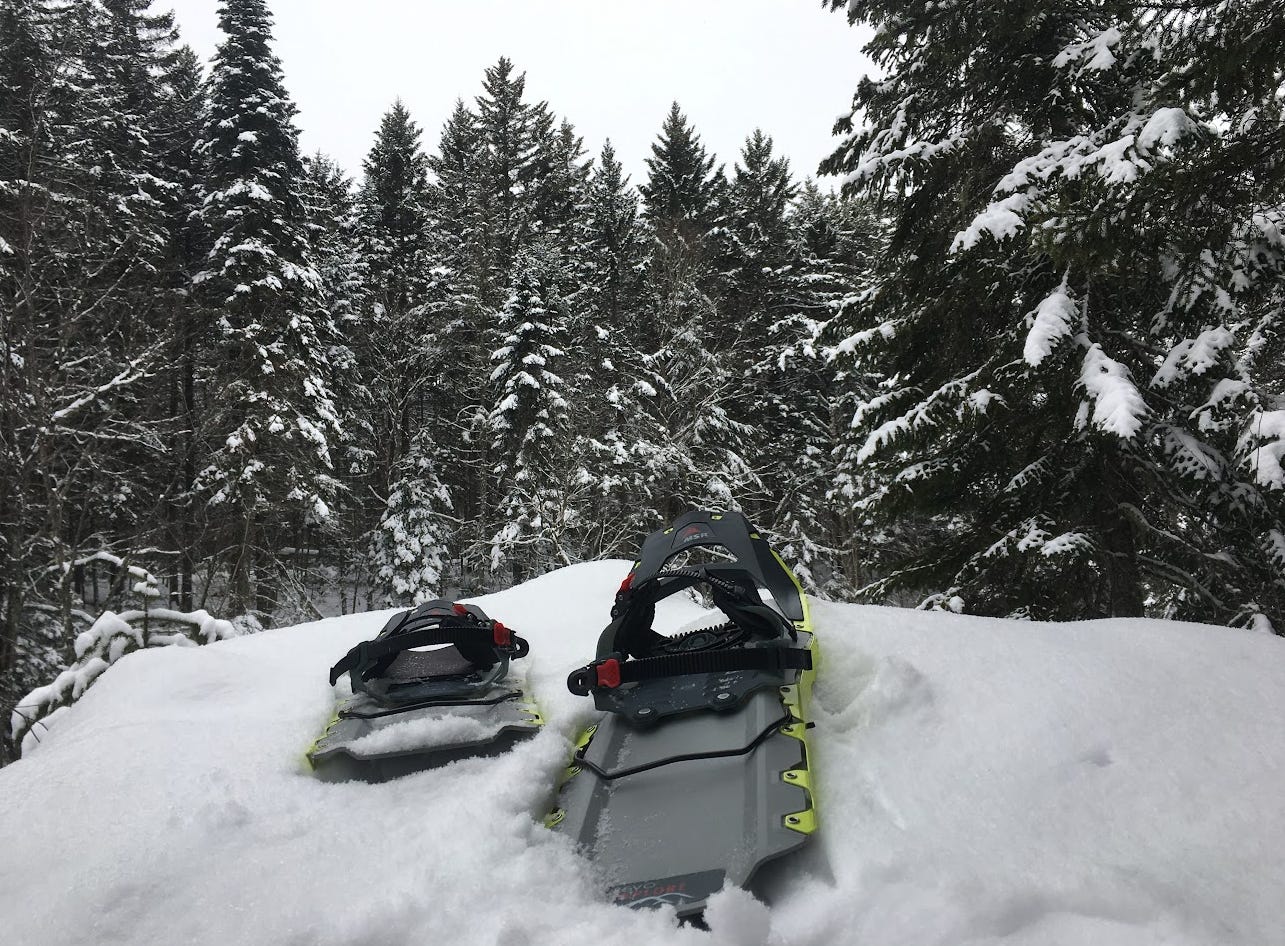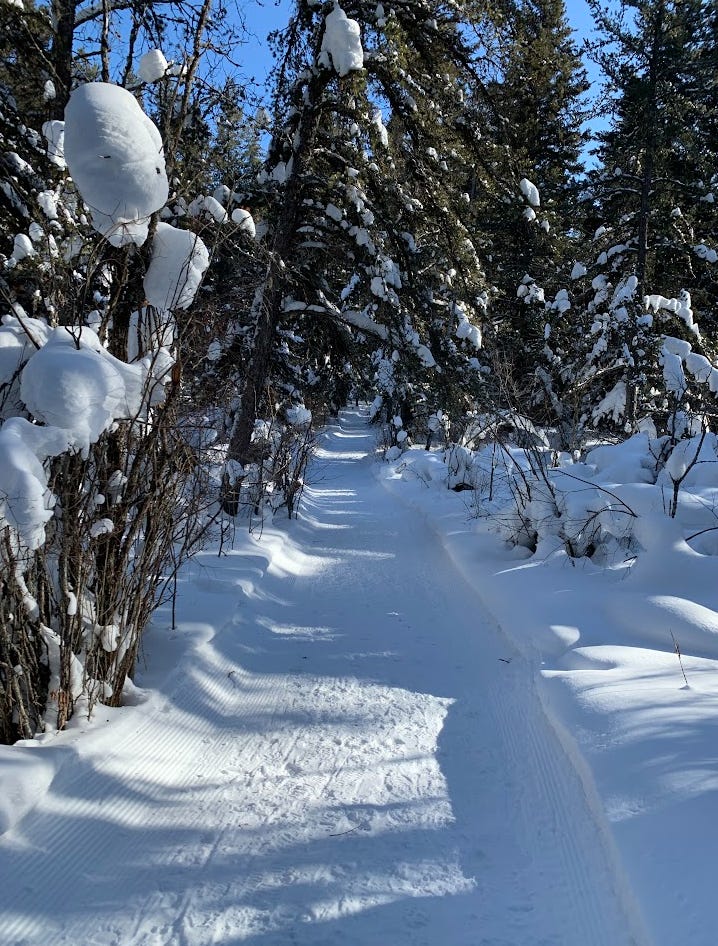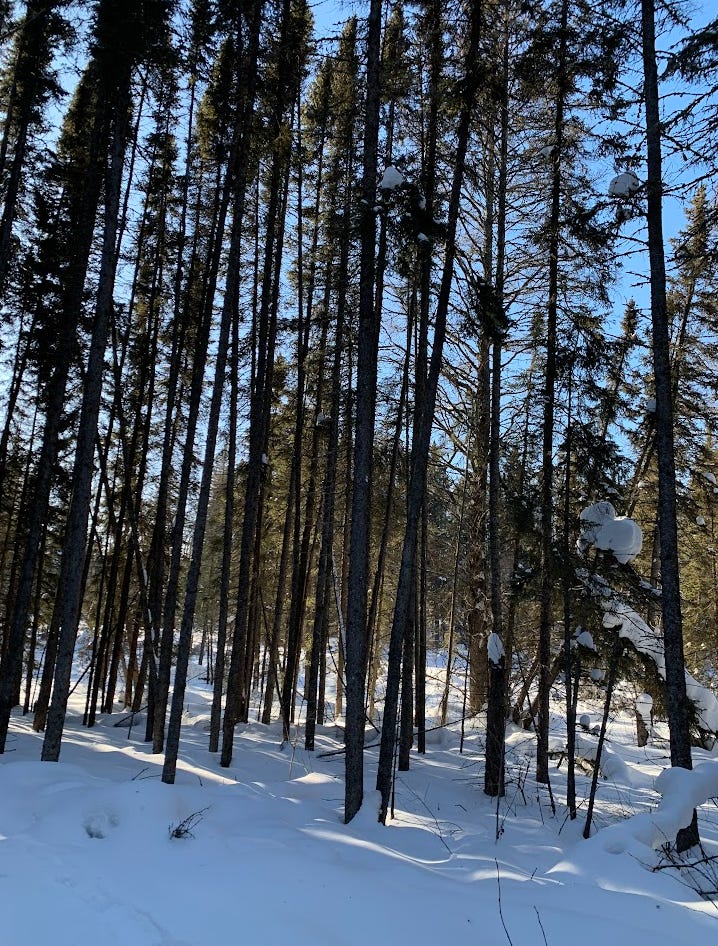As I write this, much of the American northeast remains encased in ice. It formed last weekend when a fresh dumping of snow started to melt, only to freeze into rock-hard foundational ice when the temperature suddenly plummeted. So we’re now living at the mercy of our thermometers; waiting for things to creep back into the upper 30s so that we can leave our houses and apartments without crampons. In my city, there are so many folks taking falls on the ice that our hospital emergency rooms are reaching capacity as patients stagger into the hospitals with cracked ribs, broken ankles, and concussions. All of which makes me miss the winters when the streets and sidewalks became fluffy corridors of accumulated powder—a more walkable winter wonderland.
But it’s worth remembering that dreamy tufts of snow have also aggravated walkers for centuries. As soon as loose snow gets into your boots, your ability to comfortably saunter in a snowy environment is literally dampened. Combined with the freezing air temperatures, getting wet can be dangerous. And this is why we invented snowshoes.
Well, perhaps using “we” is giving ourselves a little too much credit. While the origin of snowshoes cannot be traced back to a single time and place, historians often point to the highlands of Central Asia as the proving ground—where, around 4,000 B.C., people living in the snowy highlands tried to create a kind of footwear that would allow you to float on top of the snowdrifts, as opposed to sinking into them. The early snowshoes were really just pieces of wood with foot bindings. But as humans trekked into North America by way of the Bering Land Bridge, the snowshoe evolved by necessity. The classic form that we usually associate with eras past—wooden frames with lots of lacing—were engineered and augmented by Indigenous peoples like the Algonquin nations of the east, the Cree/Ojibwe nations of the plains, and of course, the Inuit Nunangat peoples of the Arctic territories. Snowshoes were a crucial innovation that allowed people to continue hunting, traveling, and being social in the middle of winter.
It might seem strange, then, how western culture has basically relegated snowshoes to the basement archives. You’re extremely unlikely to hear a friend or a coworker say, “Man, when that blizzard rolls in, I’m grabbing my snowshoes and hauling ass to the boreal zone.” And that’s because most of our contemporary winter activities are more adrenaline soaked and stimulating. Shred your way down a ravine on freestyle skis! Hop on a snowmobile and rip through the frozen woods like Slim Pickens riding the atomic bomb at the end of Dr. Strangelove! Hell, even strapping on microspikes and climbing a snowbound mountain has kind of an assertive energy to it—you’re able to scale the snowbound mountain because you’re piercing it with sharp pieces of metal.
Snowshoeing doesn’t fall into this force-foward genre of winter activities. It’s a more passive, meditative way of moving around outside. And it can also be really grueling.
I recently got to experience all of this firsthand in the heart of Canada. I was on a work trip to the brutally chilly province of Manitoba, and after spending a couple of days in Winnipeg—making a fool of myself on the ice skating trails that form along the city’s downtown rivers—I made a brief foray over to Riding Mountain National Park, which is contained in a boreal forest on Manitoba’s seemingly endless prairies. The wind-chill on the day of my arrival was -30 degrees. Skating on the park’s superlative water body, Clear Lake, and being vulnerable to its face-burning gusts was too dangerous. But the sun was out and the trails through the woods offered some shelter from the wind. The park’s onsite winter gear rental shop, run by a nonprofit organization, had entire racks of snowshoes ready for the taking. These were not the wood-and-lace snowshoes of centuries past, of course. Modern snowshoes usually have metal frames, with plastic bindings and a set of dull crampons on the underside, for stability on sloped surfaces. But what I realized as I set off on the Brûlé Trail—a 2.6-mile loop through corridors of conifers and the occasional open meadow—is that snoeshowing for the first time (or the first time in a long time) can feel like learning how to walk with a new set of feet.
Your gait subtly changes. Walking with snowshoes on top of powder will alter the way you move your lower limbs. It’s not just the weight and dimensions of the snowshoes themselves; it’s the squishy nature of the snowy surface you’re “floating” above. Often, the snowshoes do sink into the powder a little bit, and it only takes a couple minutes of sinking steps before a blissed-out forest jaunt turns into Surprise Leg Day. If you’re able to walk on a groomed trail, this isn’t quite as much of an issue. But even there, it quickly dawns on you that having these large, unwieldy things strapped to your feet enables you to walk slowly through a snowy landscape, at the cost of doing pretty much anything else. You can’t run while wearing most snowshoes (though I’ve heard of a few niche models that allow for this) and you can’t climb steep surfaces in them. And taking them off and putting them back on can be kind of a pain—requiring you to sit in the snow, take off your gloves, and fiddle with binding buckles as your fingers are chapped raw. Snowshoes have a way of forcing you to slow down and focus.
This was exactly what I needed, after a nightmarish month of events that only seem to be getting worse. As I crunched through the winding halls of the Brûlé Trail, admiring the great clumps of snow on the pine boughs and the occasional trees that had been knocked over by wind and splintered mid-trunk, it briefly occurred to me that I was snowshoeing across part of a winter landscape that Trump wants to steal. If this sickening thought had crossed my mind during the car ride to Riding Mountain, it would have turned my cheeks red and jacked my cortisol levels (especially if I had been using my phone at the time, as I wrote about last week.) But the vastness and stillness of the gleaming white, silent forest kept me grounded. The beauty of the Brûlé Trail and the sweat-soaked labor that I was performing to experience it left me with two clear thoughts. Trying to annex a country as enormous as Canada would be incredibly stupid. But of course, this is Trump, and if he and his acolytes really are that stupid, they will run into fierce resistance from Canadians, and they will eventually lose.
I realize these are actually really alarming thoughts! They involve escalating conflict between two historically allied neighbors. And yet, processing these thoughts while I walked through the white woodlands of Riding Mountain National Park on snowshoes made it easier for me to come to terms with the stark reality that in a global sense, we are at the mercy of a malignant narcissist who wants to push us into a war; for no other reason than to scratch an itch. Once you accept a reality like this, you are better equipped to do something about it; whether it’s brainstorming methods of resistance, forming new alliances, or just thinking about what you could be ready to do, if things do fall apart. As I continued along the trail, emerging from the trees into a meadow of fresh powder, I thought about what I could do to support Canada, if Trump went for it.
The strangest thing about this juxtaposition of serene scenery and fiery musings was that they didn’t feel discordant. I was moving at a glacial pace through an enchanting little pocket of a country that I’ve enjoyed visiting and getting to know for decades. At a time when that country is being threatened by my country, seeing the landscape and being immersed made me think about the sovereignty of this land and my relationship with it. And it also affirmed something I already knew, after spending time in Montreal, Winnipeg, and other Canadian cities—Canadians love their country and they will fight like hell to defend it. The pine trees on the Brûlé Trail seemed to ask, “Wouldn’t you?”
And that, my friends, is why snowshoeing will always have a special place in my heart, when it comes to poking around outdoors. There is an agony to it—the strain on your legs and feet, the amount of sweat that you expel as you struggle to keep moving, and the monotony of taking labored step after step through malleable snow. But through that grueling labor, you can find a unique symbiotic intimacy with the external and internal landscapes. When you realize that the two are connected, it feels ecstatic.
But don’t just take my word for it. Give snowshoeing a shot while we still have a solid month of winter ahead of us! Pick up a pair at any store that allows open box returns (in case you decide snowshoeing isn’t for you) or rent them from a gear outfitter. Get your half-frozen hands into your mittens after tightening all the snowshoe buckles and as you pick up a trail that’s caked with snow, don’t just expect serenity. Snowshoeing is a more bitter tonic. You will ache, you will tire, and you will adjust. And once things really slow down, outside and inside, you might even be able to hear your heartbeat.
I know I did, out on the Brûlé Trail. Once. I think.
Elon Musk’s ongoing and illegal dismantling of our federal government has now hit the National Park Service. As Katie Jackson reported for The Trek, thousands of park and forest workers have been laid off, as Musk and Trump continue their mission to slash government spending so that they can give themselves and their fellow billionaires an hefty tax cut later this year. On top of being heartless and unconstitutional, the layoffs are a crippling blow for park visitor safety, outdoor education, and the integrity of our public lands. As empty and gormless as it might feel to call your representatives these days (especially when the leadership of Democratic Party appears to be sleepwalking through Trump and Musk’s coup), we have to keep doing this; especially if those Reps and Senators are Republicans encouraging this austerity or Democrats failing to meet the moment. Find your members of Congress and call them. Be a thorn in their sides.
Oh, and speaking of mass layoffs, some of you might have heard that Outside recently put most of its editorial staff out to pasture. Why? Because, as reported by Adventure Journal (a great print-only outdoors magazine) the leadership of Outside Inc. wanted to buy Inntopia, a travel booking software platform used by many of the big ski resort brands like Vail. In other words, Outside Inc. is pivoting away from the storytelling field and breaking into the content field. The calculus seems to be that there’s more money to be made in expanding a tech platform than publishing a good magazine, and while that’s probably true to some degree, it’s reflective of a very bleak state of affairs in the outdoor media circuit. Maddy Marquardt, who publishes the newsletter Hello Stranger, has a post about this state of affairs that I found comparably cathartic and troubling.
This makes me all the more grateful to those of you who have chosen to support Mind The Moss by becoming paid subscribers. I’m not exaggerating when I say that I would not be able to afford the time and space that’s necessary to write this newsletter each week without your generous support. So truly, thank you. And if you’ve been thinking about becoming a paid subscriber to Mind The Moss, today is a great day to do it.







Love this homage to snowshoeing. I actually responded "snowshoeing!" in a Zoom meeting icebreaker last week on my favorite thing to do in winter. That experience you describe is exactly why I love it. And for an older person with increasingly brittle bones, it seems somewhat safer than criss-country skiing or ice skating. Thank you for encouraging others to try this wonderful, simple millennia old way of getting out in winter.